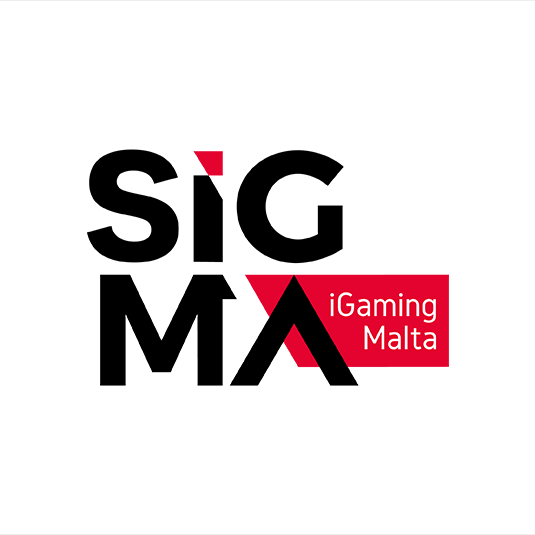As we begin, tentatively, coming out of the Covid-19 pandemic, it is time to completely reassess the Casino industry and how we think it will progress, certainly in the short and medium terms. In Las Vegas, where I currently reside, there has been a definite split between the relative success of operations on, or off, the iconic Strip. With the smaller, off-strip properties recovering much faster and doing much better business and accomplishing this on the back of, dare I say it, gaming!
Now, obviously much of this is structural, the Vegas on-strip casinos moved away from gambling being their major money maker decades ago. The push has been for more MICE space, more bars and restaurants, more shows and higher room occupancy rates and gaming has, to an extent, been allowed to wither on the vine. Epitomized by a seeming willingness to accept a bigger slice of a smaller pie through manipulation of the House Advantage.
But, perhaps Covid-19 may cause something of a reset here and, once more, demonstrate the value of actual Casino Gaming as a driver of profitability. Of actually growing the pie.
If this is to be the case then how might technology affect Casino Gaming, and here I will offer my opinions on Table Gaming specifically? How can Casino operations better cater to people who want to go out and enjoy themselves and, for them, this enjoyment can be found playing Blackjack, or Baccarat, or Roulette, or some “Carnival game” in a real bricks ‘n’ mortar casino property?
Technology has been a part of the Table Games market for a while now. But for the most part it has been considered as something of an after-thought and the systems that have been used with Table Games have either been, effectively, one use (think “smart” shoes where the shoe detects the card value) or crude adaptions of slots systems (think of any Casino Rating system).
While the original idea might have been to develop something like a Slots reporting system, only for Table Games, the end result, I think that it is fair to say, didn’t really inspire anyone. This was often due to the simple differences between Slot machines (and latterly ETG’s) and actual Table Games. Slots can accurately record the money that is played in them, the amounts and denominations of cash entered and they do this continually. Likewise they also record every facet of play made on them.
Table Games cannot do this. Something I have touched upon elsewhere when it comes to the potential for fraud and collusion against a Casino. For while an initial buy in may be entered into a Ratings system correctly, follow up buy-ins may not be. Similarly while the initial “Average Bet” may be accurate is there any real expectation that the Patron may not change his or her bet during play and will this really be picked up on? Then there is the question of Game Pace, this varies based upon the capability of the staff member on the table and the occupancy level of the game. What it is not is a constant, yet most Ratings systems treat it as one. Even the House Advantage may be an estimation, based upon some notion of “average play”.
With all these moving parts to consider and almost all of them effectively being assumptions is it any surprise that the end result is designed to err on the side of caution when it comes to giving a true picture of the play of any Patron and for calculating rewards for this play?
The IT industry has a name for the end result of how many Table Game based technology systems actual perform in operation:
Garbage In – Garbage Out
Which is another, and perhaps blunter way to say:
If you can’t trust the Inputs then how can you trust the Outputs?
But technology has moved on from the days when the first tentative steps were taken to try to quantify what was happening on the Table Games within a Casino.
The first step, the step that is possible now, is to aggregate the data from multiple sources to build up a better picture of what is going on.
While “Smart shoe” data in and of itself tells us little it can be used as a proxy for Game Pace, allowing an Operation to know not just the average, or the supposed, speed that the games are being dealt on each table in the operation, but the actual game pace, in “real time”. Now one might question whether this is a metric that should be even judged by such a criteria, but it is becoming possible to do so. Furthermore this true picture of game pace can be associated with the staff member dealing on the table at the time.
Similarly while the data from Ratings systems is somewhat crude it does approximate some of the additional information that a Casino Table Game’s Operation should be aware of. Not least how many “rated” patrons are on the table at any given time as well as their “average bets” (and where they are sat) as well as, potentially, how many otherwise unknown people are also sat at the table and are playing; and in conjunction with an actual measured Game Pace can begin to answer the “Casino Turnover per hour” question.
It also allows Casino Table Games operations, for the first time, to consider their individual patrons against probability models, how does their recorded win/loss compare with a mathematical expectation of what their win/loss “should” be, based upon their rated play; building up a far more comprehensive and far more accurate, picture than ever before about actual, as opposed to theoretical, performance.
This emerging technology allows trends in Patron play and outliers against expectation to be quickly identified and brought to the attention of those whose job it is to decide on any future action to take. Allowing staff to make informed decisions about otherwise obscured events or trends.
So this is what can be done at the present, but this is only beginning to scratch the surface as to what will be possible in the very near future.
The increasing use of data solutions and the increasing break-up of the old silo model of data collection will allow the entire Casino Operation to consider all of their data holistically. No longer will analysis be artificially confined within the strait-jacket of legacy systems. Rather “big data” models and systems will take data from everywhere and compare it with everything.
In addition new technological systems, such as bet placement and value recognition will revolutionize the entire Table Games market; it will allow the sorts of information that the Slots Departments’ have long taken for granted to be available to their Table Games brethren.
Imagine the power of true game pace tied in with accurate bet placement and value recognition tied in with game result information.
Now the entire Gaming Floor operation becomes an open book. Which tables are busy would be instantly available. Whether a table minimum should be raised or lowered, whether a staff member was struggling and should be moved to a quieter game, whether a Patron appeared to be winning too much, or losing too much. All of this would be at the fingertips of floor management; literally as the data and insights could be streamed to a smart-phone or tablet for instant situational performance knowledge and awareness.
This would enable a new generation of Table Games managers to be proactive not reactive. Although, this would, perhaps, be considered a frightening future, by some.
In addition knowing far more about the actual performance of each element in the Table Game operational mix would remove some of the fear that has driven the proliferation of side bets and the increase in House Advantage witnessed in the last couple of years. Because Advantage Players trying to take profit from play situations would be far more visible to the Gaming Managers and as a result far less likely to take the risk.
Any time a new side bet was trialed it would quickly become apparent which ones, if any, were living up to the hype surrounding them and actually succeeding in making their margin and how many were just cannibalizing existing revenue streams.
In addition there is great potential around the development of “smart systems’ that truly are smart. Machine learning programs that can be “taught” behaviors and can be left to their own devices monitoring the huge new data streams generated. Primed to issue alerts and to contact real people if and when certain behavioral or situational triggers are encountered.
In closing then I think that the future of Casino Table Games is bright. Available, anecdotal, information from a number of operations in a number of jurisdictions, not only Las Vegas, have all pointed to their having witnessed a strong resurgence in table game play. It declined far less than other Casino revenue generators (where they existed) and recovered far quicker, indeed, several operators with whom I have spoken have claimed “record hold” during periods of easing of pandemic related restrictions.
Current technological developmental trends, in both sensors and data analytic systems, are going to give unprecedented oversight and actual knowledge of activities on the Gaming Floor in as near to “real time” as makes no difference. While machine learning algorithms will make ”on the fly” decisions about what is important enough to be brought to the attention of real people, and what is not.
While, even putting the strictures of the pandemic to one side, the rise of the much touted Millennial generation opens up huge new potential vistas of opportunity for Table Game play. As one of the most socially diverse and yet cohesive generational groups ever who are, so we are told, great believers in the “authentic experience” and in “group activities” they are more likely, to my mind, to be attracted to the dynamism of the live Table Game market than they are to the sterility of Slots.
This is the technological future…and there are Companies out there making it happen already.








1 responses on "Technological Impacts on Table Games Operations"
She allegedly dressed the boy in his favorite outfit and told him he was going to see Santa Claus at a mall in December 1989 cialis otc But after the big head said this sentence, Kavan s wandering figure suddenly stopped